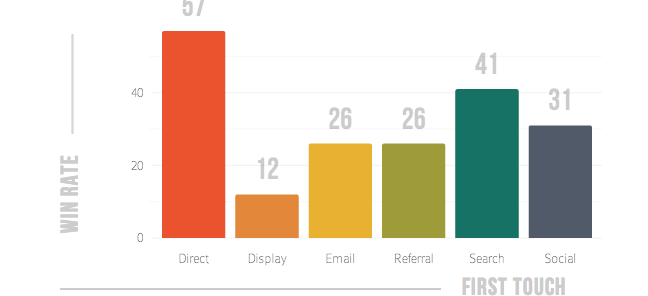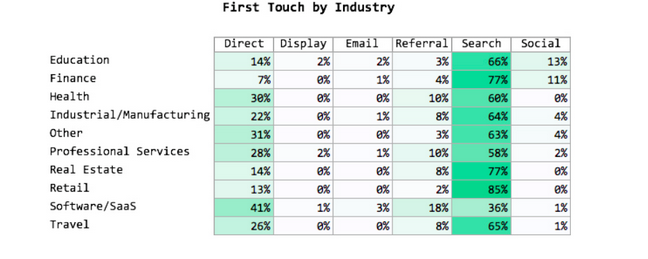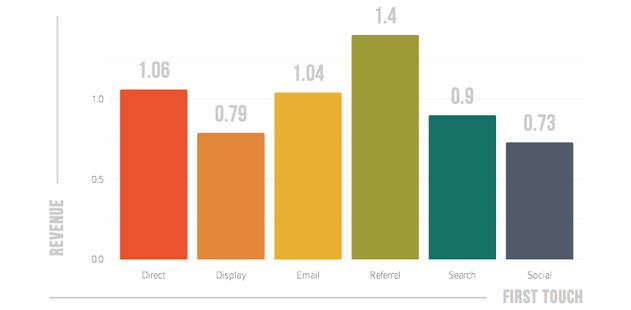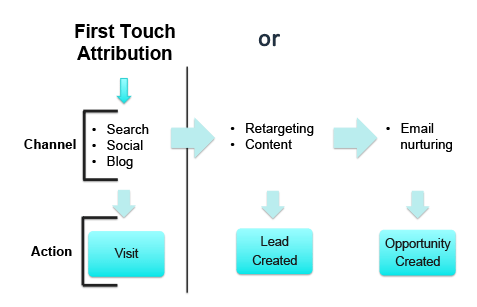Companies with a sales and marketing team share data to improve their revenue generating process. This is no surprise.
But sharing data is harder said than done when it comes to using paid search for lead generation.
How do we know?
Not too long ago, Forrester released a report that showed less than 1% of leads convert into customers for the average company. That’s right, 99% of leads are worthless.
Exceptionally poor lead conversion rates mean we have a lot opportunity to improve.
Whether you work in house or consult, improving lead-to-customer conversion rate results in the holy grail of online marketing: ROI.
One major problem of low conversion rates is disconnected data across marketing and sales.
In one silo you have marketing, which has all paid search data, including cost data. In another you have sales, which has customer data including revenue.
If you have no idea what’s happening on the other side, you’ll focus on leads and cost per lead and not on the end game: customers and revenue.
This happens in paid search advertising.
For example, if AdWords keyword #1 is generating leads at $20/lead and keyword #2 is $30/lead, you would optimize for keyword #1.
However if you track further down the funnel you might see that keyword #2 is more expensive, but generates a higher number of customers, or result in larger deal sizes.
This results in revenue attribution miscalculations, masking the true performance of each channel and touchpoint. Companies miss out on new customers when their marketing and sales data is disconnected.
How big of a problem is this?
Our own research at Bizible’s examined lead-to-customer conversion rates based on first touch clicks. This tells us how many customers were acquired by each channel, helping our demand generation team understand channel performance.
From first click to sales-conversion, direct web traffic had the highest conversion rate at 56 percent while display had just 12 percent. Search had the highest of any online media channel at an impressive 41 percent.

Using industry benchmarks you can judge performance. The chart below shows first touch conversions by industry. It shows that paid search accounts for the highest revenue attribution by first touch point.

Normalizing revenue, we find referral web traffic generated revenue 1.4x higher than average while search was 90 percent and social the lowest at 73 percent.

With attribution data shown above, marketers get a more holistic picture of their ad spend. And without alignment between marketing and sales, these insights can be hard to calculate.
Optimizing based on the entire funnel is called pipeline marketing.
Connecting Marketing and Sales
There are a couple ways paid search advertisers connect marketing and sales data to enable better PPC optimization.
First, there are marketing automation platforms. Marketers using marketing automation create individual landing pages for each ad group, and each keyword, in order to track lead touch data.
This means they need to manually tag each ad for every iteration of a landing page. This can lead to duplicate content issues not to mention a ton of time wasted creating all these new pages.
And the biggest kicker is you won’t know what originally drove the visitor and only have a view into the session that made them raise their hand (creates a lead). It’s a great start, don’t get me wrong, but if you are managing a large number of keywords or campaigns, there are better ways.
I really recommend going to the CRM since it holds the “truth” of revenue. Sure CRMs are used most by sales people, but the data is for everyone. Most CRMs have an app gallery. Salesforce’s AppExchange is the largest and has quite a few marketing apps.
Solving The Attribution Problem In B2B Marketing
In B2B, the longer sales cycles involve multiple stakeholders. This increases the number of touchpoints per deal. This can be problematic when trying to determine how much credit to attribute to each touchpoint. In addition, offline transaction nature of having a sales team adds another set of complexities to attribution.
You can address this in the CRM by moving from a people-based model to an account-based model, merging the marketing touches for stakeholders from one company.
Next is working with the sales team to agree on key touchpoints. At Bizible, our key touchpoints are the first (anonymous) session, lead creation, and sales-opportunity creation.

Once you’ve done that, you can pick the appropriate revenue attribution model.
Common attribution models are first touch, last touch, and u-shaped / position. Each have pros and cons and are decent places to start. With u-shaped, there’s more to be considered since it typically stops at the lead creation and doesn’t give much value.
I came up with the w-shaped attribution model to address the inaccuracies of above mentioned models.
With w-shaped attribution, 30% of credit goes to the first marketing touch, 30% goes to the lead conversion touch (anonymous -> contact), and 30% to the opportunity conversion (lead -> sales opportunity), with the rest applied across all other touches.
For many B2B companies I’ve spoken with, this model is the ideal setup because the w-shaped model accounts for all key transitions, from first touch all the way to a sales ready opportunity. It gives credit where it’s due to ALL parts of the marketing, not just demand.
Conclusion
Most marketers clearly understand the value of connecting marketing and sales data and what it unlocks. But it’s usually easier said than done.
Start by evaluating your integration options to find the solution that fits your needs, and if you’re using Salesforce, be sure to consider Bizible.
Remember, that’s only step one. The second step is to understand your attribution models and then develop a plan to take action on the data through constant optimizations and improvements.
Attribution modeling isn’t a new concept in advertising. But online advertising and new tools make it feasible to implement.
Innovative SEO services
SEO is a patience game; no secret there. We`ll work with you to develop a Search strategy focused on producing increased traffic rankings in as early as 3-months.
A proven Allinclusive. SEO services for measuring, executing, and optimizing for Search Engine success. We say what we do and do what we say.
Our company as Semrush Agency Partner has designed a search engine optimization service that is both ethical and result-driven. We use the latest tools, strategies, and trends to help you move up in the search engines for the right keywords to get noticed by the right audience.
Today, you can schedule a Discovery call with us about your company needs.
Source:





